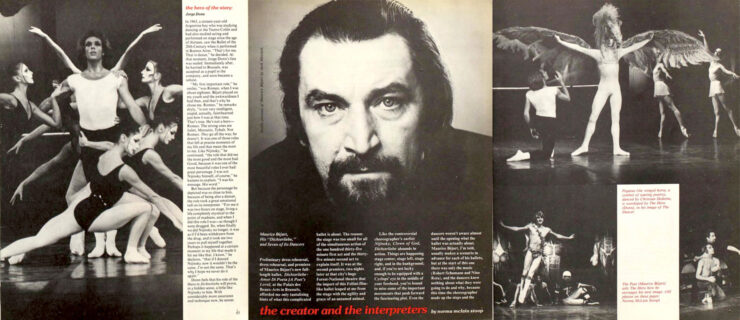Your Body: Magic Touch
During a rehearsal of a lightning-fast section in Gerald Arpino’s Birthday Variation, Joffrey dancer Patrick Simoniello pulled his adductor muscle in his left leg. After a neuromuscular massage, which uses trigger-point therapy to ease up seized muscles, Simoniello found he could dance that night. A short, specific massage immediately after the injury was just the thing he needed to get back on his feet. “I thought it was amazing stuff,” remembers Simoniello, who has since trained as a massage therapist.
Massage has been well documented as a healing agent, but getting the type and timing right makes all the difference. Short and vigorous types like the neuromuscular kind get you ready to move. Slower, deeper ones are ideal for down time, not for when you have to perform or learn new work, because the massage can create changes in muscle length.
However, deep work can help the body recover in a range of ways. During his stint with Hubbard Street Dance Chicago from 2002–2006, Simoniello found a weekly massage essential in helping his body repair and prepare for the next week’s demands. “I was dancing work by Ohad Naharin, William Forsythe, and Jirí Kylián while on tour,” says Simoniello. “That takes a toll. If I missed a week’s massage, it became much harder to get back on track.”
There are several types of massage that can be particularly helpful to dancers:
• Swedish/traditional uses light to medium pressure. It’s excellent for general restoration and stress-reduction.
• Sports massage is a deep-tissue form that is more vigorous than Swedish and works on muscle and fascia (the outer layer of muscles and organs). It’s not recommended prior to intense activity.
• Neuromuscular uses sustained static pressure on trigger points to relieve pain and increase range of motion. It can release muscle spasms.
• Lymph massage offers a light touch at skin level and helps flush the lymph system of waste products from injury. It aids with swelling and inflammation.
• Myofascial Release and Structural Integration each address both muscle and fascial tissue. Structural Integration involves 10 consecutive sessions, and is best performed when dancers are off since the body needs time to adjust.
Many companies’ massage schedules reflect performance and rehearsal schedules. At Pennsylvania Ballet, physical therapist Julie Green schedules the massage therapist for Fridays so dancers can let the massage settle in their bodies for a day or two before taking class or rehearsing. “I always ask a dancer what’s on their plate that day,” says Green. “When you make a muscle longer, it can temporarily weaken it and make it cramp. I want to know if dancers will be jumping a lot. If so, then I stay away from the power muscles.”
PAB principal Martha Chamberlain adjusts the timing of her appointments to her performances. “I never want my feet or calves worked on before a show,” she says. “Beside the fact the oil makes my feet slip in my shoes, if you get worked on and run into a rehearsal, it can throw things out of whack.”
Many dancers note that iliotibial (IT) bands are an exception. These connect the pelvis to the knee, so a tight IT band can actually pull the knee cap out of alignment. “My IT bands are a different story,” Chamberlain says. “You can pound on those anytime.” Many dancers use foam rollers to loosen up between classes or rehearsals. “IT are more like ligaments than muscle tissue,” says Green. “Because they don’t have the contractile properties of a muscle, it’s usually fine to massage them before dancing.”
There are times to be cautious about massage. If you suspect a fracture, or if you have an open wound, deep work can exacerbate it. “If you are injured, get a diagnosis first,” says Green. “If you have an infection, a massage could spread it.” Though lymph massage, Green notes, can flush the tissues and relieve swelling.
Massage can also help in ways that go beyond a dancer’s mobility. Simoniello noticed he had more confidence performing after he added massage to his health regime. “Dance is not solely an art of physicality,” he says. “Mind and spirit are involved as well. Massage provides a non-judgmental place for treatment, allowing us not only to physically heal, but to take a breath and and care for ourselves.”
Nancy Wozny writes about the arts and health from Houston.




